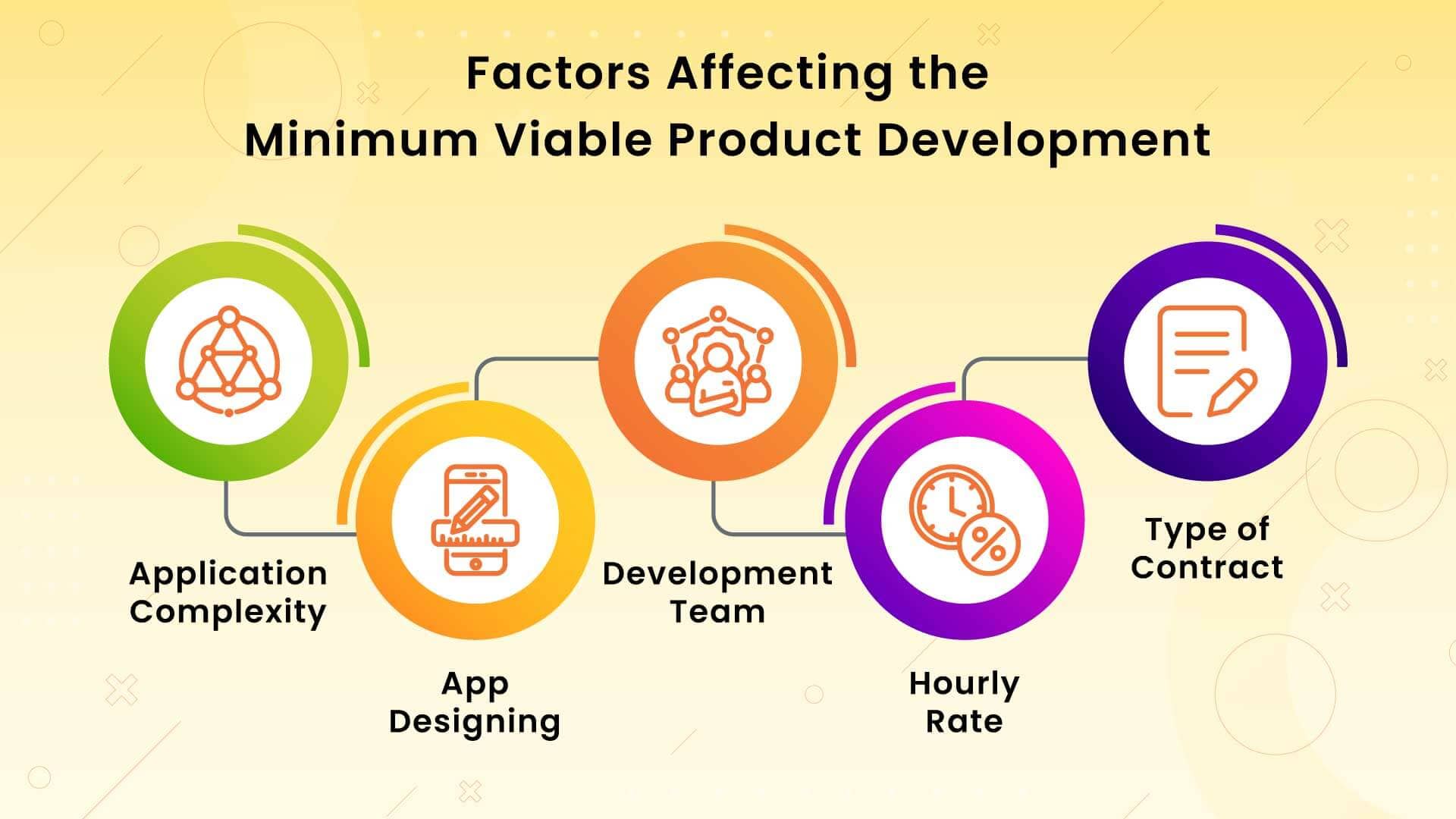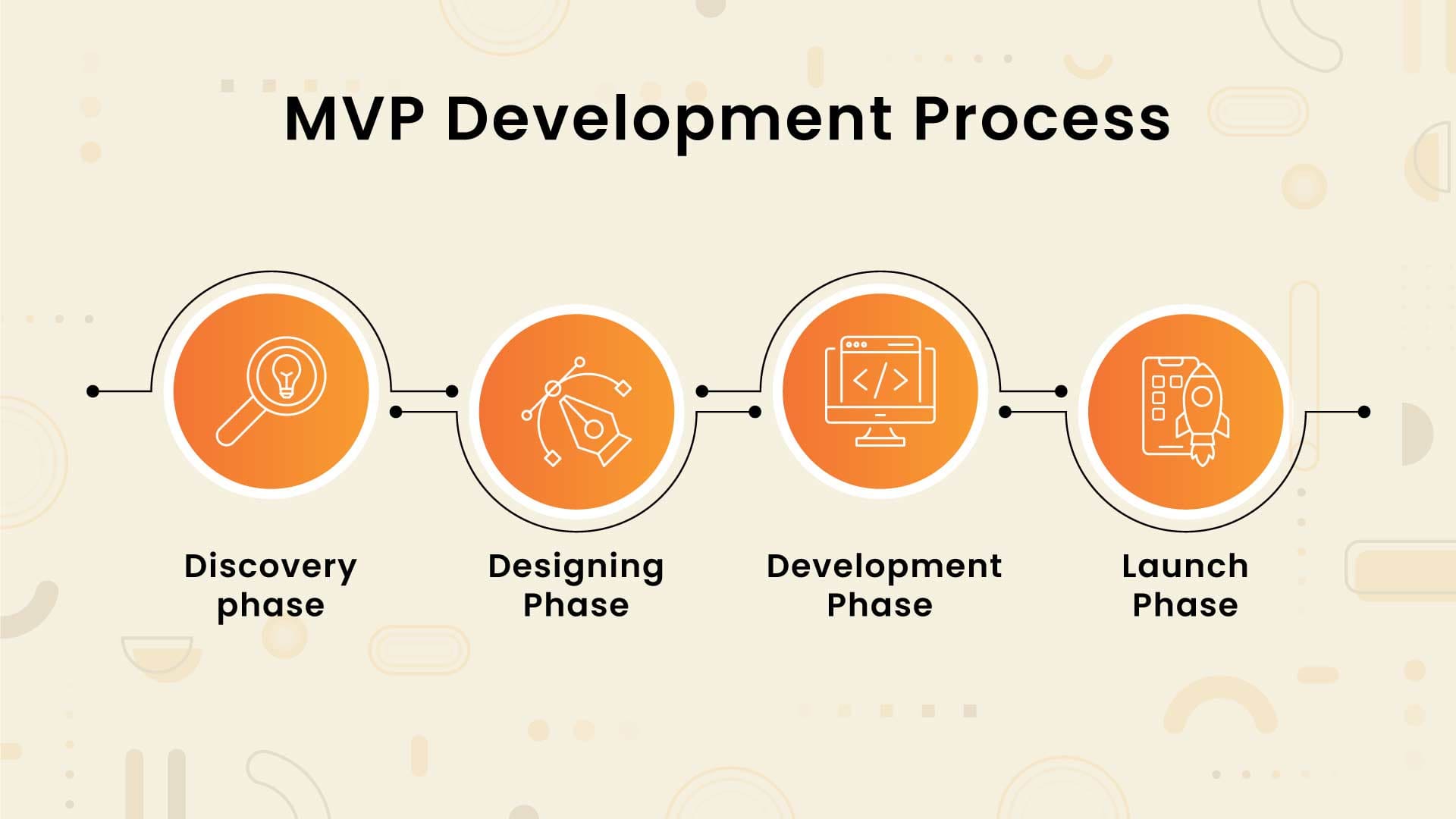As a leading app development company, we recognize the significance of accurately estimating the budget required for your Minimum Viable Product (MVP). In this article, we will explore the various factors that influence the cost to build an MVP, equipping you with valuable insights and expert advice to facilitate effective budget planning. Whether you are an aspiring entrepreneur or an established business seeking to drive innovation, this guide will empower you to make well-informed decisions regarding the financial aspects of MVP development.
Why do you need to develop an MVP?
Developing a Minimum Viable Product (MVP) is a critical milestone in the product development journey. An MVP serves as an initial version of a product that focuses on testing its core functionalities and collecting valuable feedback from early users. It acts as a strategic approach to ensure that the final product meets customer needs and expectations effectively.
When starting a new project, it’s essential to avoid investing extensive time and resources into a product that may not resonate with the target audience or solve their problems. By developing an MVP, you can minimize the risks associated with building a full-scale product from the outset.
Additionally, an MVP helps to validate your product idea and its market viability. By testing the product in its early stages, you can gauge user interest and demand, identifying any potential obstacles or challenges that may arise. This validation process allows you to make informed decisions about the future development and marketing strategies, increasing the chances of success in the long run.
How much does it cost to build MVP (Minimum Viable Product)?
Determining the cost of building a Minimum Viable Product (MVP) can indeed vary significantly depending on several factors. The complexity of your product idea, the desired features and functionalities, the choice of development team, and other considerations play a role in determining the overall cost.
Factors that affects cost of developing an MVP:

Application Complexity:
The complexity of your product idea is a significant factor in determining the cost of MVP development. More complex features, functionalities, or integrations may require additional time and expertise, leading to higher costs. It’s important to strike a balance between the desired functionality and the available budget to ensure a viable MVP.
App Designing:
The design of your MVP plays a crucial role in attracting users and creating a positive user experience. Investing in thoughtful and intuitive design can impact the development cost. Complex or custom designs may require more design resources and time, contributing to higher costs. However, a well-designed MVP can enhance user engagement and satisfaction, which ultimately benefits the success of your product.
Development Team:
The choice of your development team can significantly impact the cost of building an MVP. There are different options to consider, each with its own cost implications:
- In-house: Hiring an in-house development team provides more control and direct communication but comes with higher costs, including salaries, benefits, and infrastructure.
- Freelancers: Engaging with freelancers can be a cost-effective option as you pay for specific tasks or hours worked. However, managing multiple freelancers may require more coordination efforts and potentially impact the overall timeline. And it maybe possible that freelancers are engaged with multiple projects at the same time which may affect quality and deadline as well.
- Outsourced: Outsourcing development to a specialized agency or offshore team can provide cost savings. However, communication and coordination challenges may arise due to geographical and cultural differences.
Carefully evaluating your requirements and budget constraints can help you determine the most suitable development team option.
Hourly Rate:
The hourly rate charged by the development team or freelancers directly affects the overall cost. Rates can vary based on location, expertise, and experience. Higher rates often correlate with more skilled professionals and potentially better results. Balancing the desired expertise with your budget is essential to ensure cost-effectiveness.
Geolocation:
Different regions have varying cost structures for development services. For example, North America or Western Europe generally have higher rates compared to Eastern Europe, Asia, or South America. Considering geolocation can help optimize costs while ensuring quality. It’s important to evaluate the trade-offs between cost, time zone differences, language barriers, and cultural compatibility.
Experience:
The experience level of the development team or freelancers can impact the cost. Highly experienced professionals often demand higher rates due to their expertise and track record. However, their proficiency can contribute to a smoother and more efficient development process, potentially reducing overall costs by avoiding common pitfalls and rework.
Tech Stack:
The choice of technology stack for your MVP can influence the development cost. Open source tech stacks can reduce costing while licensed ones can increase costs.
Also, some technologies or frameworks may require more specialized skills, resulting in higher development costs. It’s crucial to strike a balance between using cutting-edge technologies and considering the availability of skilled developers and the associated costs.
Type of Contract:
The type of contract with the development team or freelancers can affect the cost structure. Fixed-price contracts provide cost certainty but may limit flexibility for changes. Time and materials contracts offer more flexibility but can result in cost fluctuations. Carefully considering your project’s nature and requirements can help determine the most suitable contract type.
What is the process of Minimum Viable Product (MVP) development?

The process of developing a Minimum Viable Product (MVP) involves several stages that help you transform your product idea into a functional prototype. This section will outline the key phases of MVP development, providing a roadmap to guide you through the process.
Product Discovery Phase:
The Product Discovery Phase marks the initial step in MVP development. During this phase, you focus on understanding the problem you’re trying to solve and defining the target audience. Key activities include:
- Market research: Conducting thorough app market research to identify existing solutions, understand user needs, and validate your product concept.
- Defining the problem: Clearly defining the problem your product aims to solve and outlining the core features and functionalities required to address it.
- User personas: Creating user personas to gain insights into your target audience’s characteristics, goals, and pain points.
Designing Phase:
The Designing Phase involves translating your product concept into a user-friendly and visually appealing interface. Key activities include:
- User Experience (UX) Design: Creating wireframes and prototypes to define the user flow and interaction design. This process helps you understand how users will navigate and engage with your product.
- User Interface (UI) Design: Transforming wireframes into visually appealing designs by applying color schemes, typography, and graphical elements that align with your brand identity.
Development Phase:
The Development Phase brings your MVP to life by implementing the features and functionalities defined in the previous phases. Key activities include:
- Front-end development: Building the user interface (UI) of the mobile app using technologies such as HTML, CSS, and JavaScript. This step focuses on creating a visually appealing and intuitive user experience that aligns with the design specifications.
- Back-end development: Developing the server-side logic and database infrastructure to handle data storage, processing, and retrieval. This step ensures the smooth functioning of your product’s core functionalities.
- Integration: Integrating external APIs or third-party services that enhance your product’s capabilities or provide additional features.
- Testing: Conducting thorough testing to identify and fix any bugs or issues, ensuring the MVP works as intended.
Launch Phase:
The Launch Phase involves preparing your MVP for release and making it available to users. Key activities include:
- Deployment: Deploying the MVP to a production environment or hosting platform, making it accessible to users.
- User Feedback: Encouraging users to provide feedback and gather insights on their experience with the MVP. This feedback will help you refine and iterate on the product to improve its quality and address any remaining issues.
- Iterative Development: Using user feedback to prioritize and implement improvements or additional features for subsequent iterations.
Minimum Viable Product Development Tips:
Developing a successful Minimum Viable Product (MVP) requires careful planning and execution. Here are some valuable tips to keep in mind during the MVP development process:
- Define clear goals:
Clearly define the goals and objectives of your MVP.
- What problem does it solve?
- What are the key features?
Having a clear vision from the beginning helps you stay focused and make informed decisions throughout the development process.
- Identify core features:
Identify the minimum set of features that are essential for the functionality and value proposition of your product. Prioritize these features to ensure they are implemented effectively. By starting with the core features, you can launch your MVP faster and gather valuable user feedback.
- Keep it simple:
Remember that an MVP is about building the minimum necessary product to test the market. Avoid overloading it with unnecessary complexity. Focus on delivering a simple and intuitive user experience that addresses the core problem. Simplicity helps users understand and engage with your product more easily.
- Iterate based on user feedback:
Actively seek user feedback and iterate on your MVP based on their insights. Listen to your users, understand their pain points, and make improvements accordingly. User feedback provides valuable guidance for refining your product and making it more aligned with user needs.
- Test early and often:
Test your MVP at various stages of development to identify and address potential issues early on. Conduct usability tests, gather feedback from beta testers, and observe user behavior. Testing helps you validate assumptions, uncover usability problems, look for app development problems, and make necessary adjustments before scaling your product.
- Embrace agility:
Adopt an agile development approach that allows you to adapt and respond to changing requirements and user feedback. Agile methodologies, such as Scrum or Kanban, promote flexibility, collaboration, and continuous improvement. Embracing agility enables you to iterate quickly and deliver a better MVP.
- Focus on user experience:
Prioritize creating a positive and seamless user experience. Pay attention to design, navigation, and interaction patterns. A well-crafted user experience encourages user engagement, satisfaction, and loyalty. Remember that emotions and motivations play a significant role in user adoption and retention.
- Manage expectations:
Be transparent with your users about the stage of development and the purpose of your MVP. Clearly communicate that it is a work in progress designed to gather feedback. Managing expectations helps prevent negative user experiences and builds trust with your early adopters.
- Monitor metrics:
Define and track relevant metrics to measure the success of your MVP. These can include user engagement, retention rates, conversion rates, and feedback sentiment. Monitoring metrics helps you evaluate the impact of your product and make data-driven decisions for future iterations.
- Stay focused and iterate:
Maintain focus on the core objectives of your MVP. Resist the temptation to add too many features or deviate from the initial vision. Continuously iterate based on user feedback, market trends, and data insights. The MVP is just the starting point; it should evolve based on validated learning.
MVP Post Development Cost:

After the development of your Minimum Viable Product (MVP), there are several ongoing costs to consider. These costs are crucial for the continued success and sustainability of your product. Let’s explore the key aspects of post-development costs for an MVP:
Marketing of MVP:
Marketing your MVP is essential to attract users, gain traction, and generate awareness. Effective marketing strategies can help you reach your target audience, differentiate your product from competitors, and drive user acquisition. While the specific costs can vary depending on your marketing strategy, some common expenses include:
- Digital marketing: This includes activities such as search engine optimization (SEO), social media advertising, content marketing, and email campaigns. Investing in digital marketing channels can help increase your online visibility, drive organic traffic to your website or app, and engage with potential users.
- Paid advertising: Paid advertising allows you to reach a wider audience and promote your MVP through various channels. This includes paid search ads (e.g., Google Ads), display ads, social media ads, and influencer marketing. Allocating a portion of your budget to paid advertising can help you generate initial user interest, drive conversions, and accelerate user growth.
- Public relations: Public relations efforts can help generate media coverage, increase brand exposure, and build credibility for your MVP. This includes activities such as press releases, media outreach, organizing events, and engaging with industry influencers. Public relations can be an effective way to reach a broader audience and create a positive brand image.
- Marketing tools and platforms: Investing in marketing automation software, analytics tools, and customer relationship management (CRM) systems can streamline your marketing efforts and provide valuable insights into user behavior. These tools can help you track and measure the success of your marketing campaigns, optimize your strategies, and enhance user engagement.
Maintenance Cost:
Maintaining and supporting your MVP is an ongoing expense that ensures your product remains functional, secure, and up to date. As your user base grows and evolves, you’ll need to allocate resources to address technical issues, implement updates, and provide ongoing support. Some key components of maintenance costs include:
- Bug fixes and updates: As users interact with your MVP, they may encounter bugs or suggest improvements. Allocating resources to address these issues promptly is essential for maintaining a positive user experience. Regularly releasing updates to improve performance, fix vulnerabilities, and introduce new features is also crucial for user retention and satisfaction.
- Server hosting and infrastructure: Costs associated with hosting your product on servers, cloud services, or third-party infrastructure providers. Depending on your scalability requirements, you may need to adjust your hosting resources to accommodate increased user demand.
- Security and data protection: Protecting user data and ensuring the security of your MVP is of utmost importance. This involves implementing measures to prevent data breaches, conducting security audits, and addressing vulnerabilities promptly. Investing in robust app security measures can help build trust with your users and protect your brand reputation.
- Technical support: Providing customer support channels, such as email or live chat, to assist users with their inquiries and issues. Timely and efficient technical support can greatly impact user satisfaction and loyalty, as it demonstrates your commitment to ensuring a smooth user experience.
Sales:
Sales-related costs are also important to consider for the post-development phase of your MVP. While the specifics can vary depending on your business model and target market, some common expenses include:
- Sales team and commissions: If you have a dedicated sales team, you’ll need to account for their salaries, bonuses, and commissions. Sales professionals play a crucial role in converting potential users into paying customers. They engage with leads, provide product demonstrations, negotiate deals, and drive revenue growth. Allocating resources to build and maintain a competent sales team is essential for maximizing sales opportunities.
- Sales tools and software: Expenses associated with customer relationship management (CRM) systems, sales automation tools, and lead generation platforms. These tools streamline your sales processes, enable effective lead management, and provide insights into customer interactions. Investing in sales software can improve productivity, enhance customer relationship management, and optimize your sales efforts.
- Marketing collateral and materials: Costs related to creating sales presentations, product demos, brochures, and other marketing materials. These materials support your sales team in effectively communicating the value proposition of your MVP to potential customers. Well-crafted marketing collateral can make a significant impact on the sales process and help convert leads into paying customers.
Conclusion
In conclusion, developing a Minimum Viable Product (MVP) is essential for validating your product idea, gathering user feedback, and making informed decisions. By focusing on core functionalities, staying agile, and prioritizing user experience, you can create a successful MVP. Budgeting for post-development costs such as marketing, maintenance, and sales is crucial for sustaining growth. Embrace the MVP approach, iterate based on feedback, and strive to deliver a valuable product that meets user needs and market demands.
FAQs:
- How much does MVP app development cost?
The cost of MVP app development can vary based on factors such as complexity, features, development team rates, and geolocation. It’s best to consult with development companies or agencies to get accurate cost estimates based on your specific requirements.
- How to choose an MVP app development company?
When choosing an MVP app development company, consider factors such as their expertise, portfolio, client reviews, team composition, communication skills, and development process. It’s important to find a company that aligns with your vision, understands your product goals, and has a proven track record in MVP development.
- In which stage of development is an MVP created?
An MVP is typically created during the early stages of product development. It is the initial version of the product that focuses on core functionalities and aims to gather user feedback for iterative improvements. The MVP stage comes after the ideation and planning phase and precedes the full-scale product launch.
- Is MVP closer to prototype?
While an MVP and a prototype share some similarities, they serve different purposes. An MVP is a functional product with minimal features that aims to test and validate the product idea, while a prototype is a simplified model used to showcase the basic concept and gather feedback before development. The MVP is typically closer to a market-ready product compared to a prototype.

